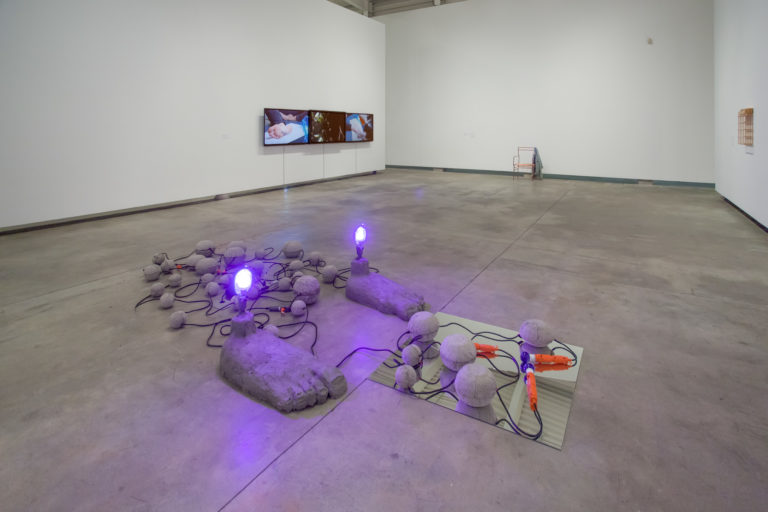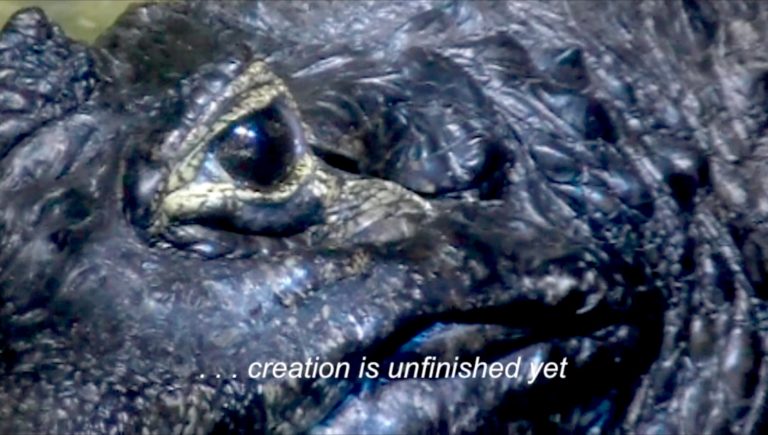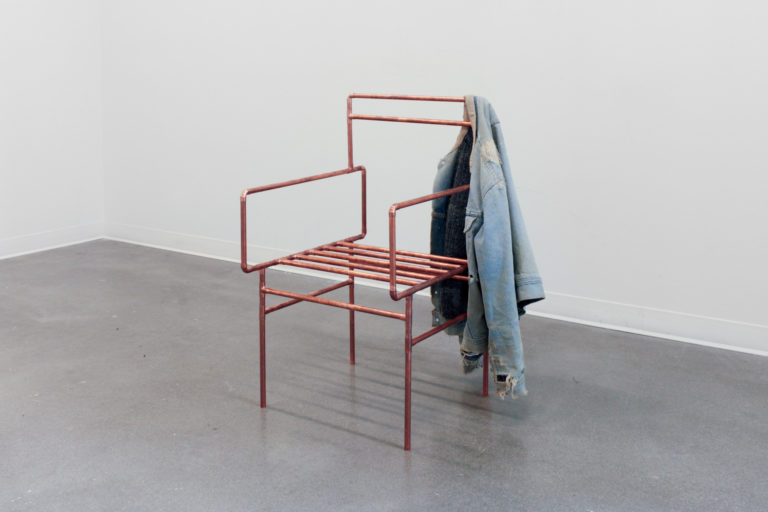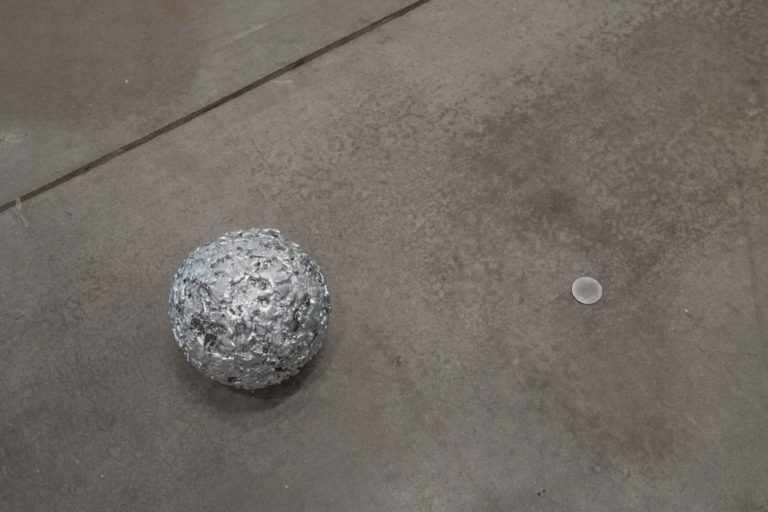5 May 2017 – 4 June 2017
Morris and Helen Belkin Art Gallery
Candle: UBC Master of Fine Arts Graduate Exhibition 2017
-
Matt Browning
ArtistMatt Browning’s work concerns time, latency and the selective and hierarchical valuation of human activity. He is a member of the curatorial collective Tarl and has studied and exhibited in the US and Canada, recently participating in group exhibitions at the Whitney Museum of American Art (New York), the Vancouver Art Gallery and the Frye Art Museum (Seattle). Browning teaches materials studies and art history to non-traditional adult learners through the Seattle organization Path with Art. He is currently based in Vancouver and Seattle.
Read More
-
Steven Cottingham
ArtistSteven Cottingham is another artist. His work has been exhibited in both professional and guerrilla contexts, including the Wellcome Collection (London, UK), Agora (Berlin), Centro Desarrollo de las Artes Visuales (Havana), Chamber (Milwaukee), The Luminary (St Louis) and the Art Gallery of Alberta (Edmonton). His writing has been published in Canadian Art, Akimbo, Temporary Art Review and in various exhibition catalogues. Currently his interests include love and labour.
Read More
-
Jessica Evans
ArtistJessica Evans is an artist and writer whose work focuses on the body and perception. She is currently constellating the relationships between her visual work and themes explored by Aby Warburg, Georges Bataille and Werner Herzog. Evans co-founded the artist collective and gallery Negative Space in Winnipeg from 2011-13. Her writing has been published in C Magazine and Scan, and her work has been exhibited throughout Canada and the US, most recently at the School of Visual Art (New York).
Read More
-
Brian Lye
ArtistBrian Lye is a filmmaker and visual artist from Vancouver. Lye’s lens-based works are preoccupied with magic, humour, perception, structural film and the everyday. His films and animations have won awards and screened at venues including Sundance Film Festival, Melbourne International Film Festival, the Contemporary Culture Centre of Barcelona and LIVE Vancouver’s Performance Art Biennale. Lye has been an artist-in-residence with the Vancouver Park Board as well as the Klondike Institute for Art and Culture in Dawson City, Yukon.
Read More
-
Carolyn Stockbridge
ArtistCarolyn Stockbridge is known for large-scale black monochromatic abstract painting and experimental sound that embodies the sacred. She has collaborated with Canadian and American artists and scored music for experimental film and political documentary. Originally from Canterbury, UK, Stockbridge pursued studies at Emily Carr University of Art + Design (BFA) and Otis College of Art and Design (Los Angeles). In the early 1990s, she pursued concentrated studies in painting and drawing at the Art Students League (New York). Stockbridge has exhibited in Canada and the US and currently lives and works in Vancouver.
Read More
-
Lorna Brown, Curator
Curator
The Morris and Helen Belkin Art Gallery is pleased to present an exhibition of work by the 2017 graduates of the University of British Columbia’s two-year Master of Fine Arts program: Matt Browning, Steven Cottingham, Jessica Evans, Brian Lye and Carolyn Stockbridge. This program in the Department of Art History, Visual Art and Theory is limited each year to a small group of four to six artists, who over the two years foster different sensibilities developed within an intimate and discursive working environment.
The following text, “Out of the crooked timber of humanity no straight thing was ever made” by UBC Associate Professor, Gareth James was published in the catalogue to the exhibition:
This is the third time a graduating group of MFA students have given me the honour of writing an introductory text for their catalogue. It’s common to say that the third time is a charm, but this type of text is a challenge. It will sit next to fine individual essays about each exhibiting artist: Matt Browning, Steven Cottingham, Jessica Evans, Brian Lye and Carolyn Stockbridge. The problem is the same each time: write a text that avoids redundantly (and reductively) repeating the descriptions of the monographic texts, while at the same time resisting the temptation to impose a thematic identity upon such highly distinct practices. The importance of the latter derives from the need to respect the fact that these five artists find themselves in a group show together only as the result of a curatorial accident – a contingent result of having been selected for a program at the same time, over two years ago.
Bertolt Brecht famously employed the analogy of an argument taking place on a streetcorner in the aftermath of a traffic accident to describe his thoughts on Epic Theatre, and it has always struck me as having a great deal to offer us in describing how art schools should function as well. So the obvious solution for a text like this would be to write about the MFA Program itself: it is after all the slowly unfolding accident that connects these five artists to each other. But the problem is not solved, only delayed: each group of artists remakes the character of the program in the act of passing through it. For the first group of students I worked my way into this problem by writing about Rem Koolhaas’s Constructivist architects swimming their way, backwards, across the Atlantic Ocean in a floating swimming pool, and Georges Didi-Huberman’s imaginary breeze. For the second group, by comparing the weird space of the MFA program to the grin of Lewis Carroll’s disappearing cat and Jacques Lacan’s algorithms. Aspects of these approaches remain relevant to this third group of artists, but I think they want this text to be a charm: part incantation, part small ornament.
In place of a thematic unity, one might try to describe a constellation of ideas and artworks composed with five points, one centered on each artist, but as the work of one of them warns us, the stars, well, the stars are a mess. Culture is not just that which we look up to (the best of our imaginations projected onto the heavens) but the cultivation of the earth on which we stand. I’m not talking about neatly trimmed well-behaved ornamental gardens, but about churning up soil, mixing shit and seeds and knowledge about the seasons. Raymond Williams wrote about this in 1976, and he stated that “Culture” is one of the two or three most complicated words in the English language because it has come to be used for important concepts in several distinct and often incompatible systems of thought.
With Brecht’s street scene organization of arguments in mind, I once wrote that if you set about building a machine to compute the problem of Culture, it might look something like an art school. What I didn’t feel the need to elaborate at the time was that it’s an odd sort of machine, one that you set to work without really knowing what it produces. We should talk about this here because, yes, we know that it produces art and artists – sure, a yield of five this year – but there’s a profound indeterminacy built into and by the machine with regard to the Culture it, and its artists, produce. In order to pry open what this distinction is intended to demonstrate, to open it up specifically on terms that each of our five artists elaborate in peculiar and riveting ways, I’ll ask that we consider a distinction we encountered in the work of our last visiting artist this year, the Viennese filmmaker Constanze Ruhm. In an essay commemorating her teacher, Harun Farocki, Ruhm described how he instilled in her the need to maintain the distinction that Mikhail Bakhtin and the Russian Formalists theorized as the difference between fabula and syuzhet. What we vaguely refer to as a film’s story is in fact the result of the interaction between two separate entities: the specific events and actions selected and concretely arranged by the syuzhet (or plot), and the fabula, the raw material from which the syuzhet selects and re-composes, but which also names the mental reconstruction consequently generated in the mind of the viewer.
This distinction is not to be found circulating as a subject or foundational theory for our artists, rather it works the other way around. It is their work that offers to shed some light on the distinction, demonstrating perhaps how their work acts on Culture, rather than emblematizes it. We can observe how one of our artists frequently and comically stalls the production of the fabula by abruptly calling to a halt the operations of the syuzhet. Another withholds the crucial device of the heroic male figure from the lexicon of the syuzhet, leaving us grasping at the fabula‘s threads. Yet another centripetally forces the fabula back in upon the machines that produce it, preventing its flight of fancy. While in the fourth and the fifth these two attributes, of the stories we tell about assumptions of significance and value in art and the world, present each to the other as spectres in a relation of symptomaticity or of spiritual transcendence. Each of our artists seem to have recognized that although artworks and artists are not constituted as stories, they are nonetheless always already emplotted into narratives not of their own making … and that this requires an aesthetic, comic, philosophical, political or spiritual exertion to ensure that it is not ultimately the story that captures them. Hence the need for an incantation, or a small ornament, such as this one.



Jessica Evans, Herzog (still), 2016


Steven Cottingham, Untitled, 2017


Carolyn Stockbridge, Untitled (1.10.PBk9.CI77267/PBk11.Fe3O4) from the Frequency.10. series, 2015-17



Brian Lye, Approximately 4,032 Roses (a few of which might not be roses) In My Neighbourhood (still), 2016


-
Matt Browning
ArtistMatt Browning’s work concerns time, latency and the selective and hierarchical valuation of human activity. He is a member of the curatorial collective Tarl and has studied and exhibited in the US and Canada, recently participating in group exhibitions at the Whitney Museum of American Art (New York), the Vancouver Art Gallery and the Frye Art Museum (Seattle). Browning teaches materials studies and art history to non-traditional adult learners through the Seattle organization Path with Art. He is currently based in Vancouver and Seattle.
Read More
-
Steven Cottingham
ArtistSteven Cottingham is another artist. His work has been exhibited in both professional and guerrilla contexts, including the Wellcome Collection (London, UK), Agora (Berlin), Centro Desarrollo de las Artes Visuales (Havana), Chamber (Milwaukee), The Luminary (St Louis) and the Art Gallery of Alberta (Edmonton). His writing has been published in Canadian Art, Akimbo, Temporary Art Review and in various exhibition catalogues. Currently his interests include love and labour.
Read More
-
Jessica Evans
ArtistJessica Evans is an artist and writer whose work focuses on the body and perception. She is currently constellating the relationships between her visual work and themes explored by Aby Warburg, Georges Bataille and Werner Herzog. Evans co-founded the artist collective and gallery Negative Space in Winnipeg from 2011-13. Her writing has been published in C Magazine and Scan, and her work has been exhibited throughout Canada and the US, most recently at the School of Visual Art (New York).
Read More
-
Brian Lye
ArtistBrian Lye is a filmmaker and visual artist from Vancouver. Lye’s lens-based works are preoccupied with magic, humour, perception, structural film and the everyday. His films and animations have won awards and screened at venues including Sundance Film Festival, Melbourne International Film Festival, the Contemporary Culture Centre of Barcelona and LIVE Vancouver’s Performance Art Biennale. Lye has been an artist-in-residence with the Vancouver Park Board as well as the Klondike Institute for Art and Culture in Dawson City, Yukon.
Read More
-
Carolyn Stockbridge
ArtistCarolyn Stockbridge is known for large-scale black monochromatic abstract painting and experimental sound that embodies the sacred. She has collaborated with Canadian and American artists and scored music for experimental film and political documentary. Originally from Canterbury, UK, Stockbridge pursued studies at Emily Carr University of Art + Design (BFA) and Otis College of Art and Design (Los Angeles). In the early 1990s, she pursued concentrated studies in painting and drawing at the Art Students League (New York). Stockbridge has exhibited in Canada and the US and currently lives and works in Vancouver.
Read More
-
Lorna Brown, Curator
Curator
